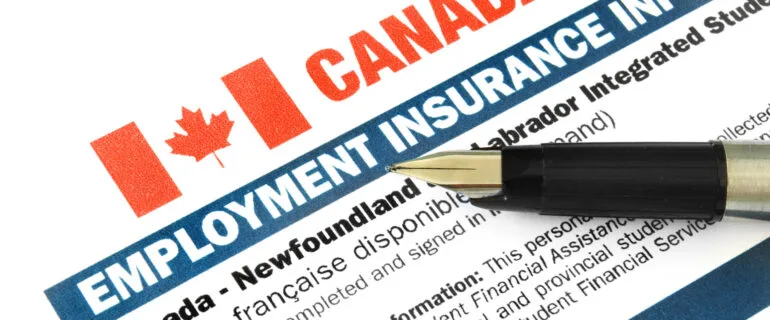Changes to Maximum Insurable Earnings for Employment Insurance in 2024
The Canada Employment Insurance Commission (CEIC) has announced an increase in the Maximum Insurable Earnings (MIE) for Employment Insurance in 2024. This means that the highest level of income for which EI premiums are paid will rise from $56,300 in 2023 to $60,300 in 2024.
What is MIE?
The Maximum Insurable Earnings (MIE) is the highest level of income for which Employment Insurance (EI) premiums are paid. The MIE is updated each year and determines the maximum amount of money that can be paid each week in benefits under the EI programmed.
How will the MIE increase impact employees and employers?
Employees who are insured must pay EI payments on all earnings up to the yearly maximum wage of $60,300. This implies that a $1.58 deduction will be made for every $100 of pay earned until the annual limit of $60,300 is reached. The increase in MIE means that insured workers will pay a maximum annual EI premium of $952.74 in 2024, up from $889.54 in 2023.
Employers and their employees can save money on their health insurance costs through a programme called the Premium Reduction Program, which is set up by employers to provide short-term wage-loss plans.
What is the impact of the MIE increase on EI benefits?
Beginning in January 2024, the weekly maximum EI compensation rate will rise from $595 to $638. Claims filed before December 31, 2023, will be unaffected by the 2024 MIE rise.
What about people in Quebec?
People in Quebec are covered by the Quebec Parental Insurance Plan (QPIP), which costs $1.20 for every $100 of insurable income ($1.68 for employers). The premium rate in Quebec is lower than the rest of Canada since the Province of Quebec has been collecting premiums from its employees since January 2006 to run its own maternity, parental, and paternity benefits through the Quebec Parental Insurance Plan.
Also read: Essential Information on Payment Dates and Benefits
Updates on Employment Insurance (EI) Premium Rates and Basic Exemption
In 2023 and 2024, the EI premium rate is set at $1.58 per $100 of insurable wages. The government announced the replacement of the Canada Emergency Response Benefit (CERB) with three new benefits on August 20, 2022, to prevent additional expenses for employees and businesses due to the pandemic. The EI Senior Actuary projected that the 2023 rate would have been $1.81 without these interim measures.
For 2024, the maximum insurable earnings (MIE) will be $60,300, representing a 7.1 percent increase from the $56,300 MIE in 2023.
While there is no general exemption for EI, employees whose insurable earnings do not exceed $2,000 in a given year are entitled to a full refund of their EI premiums.
Calculation of Maximum Insurable Earnings (MIE)
The Maximum Insurable Earnings (MIE) are determined by the percentage increase in the average weekly earnings of the industrial aggregate in Canada, according to Statistics Canada. The calculation for the 2024 MIE increase is as follows:
Divide the average of the preceding 12-month period ending on April 30, 2023, by the average of the 12-month period ending on April 30, 2024. Multiply the resulting percentage increase by the previous year’s MIE figure before rounding, and round the result to the nearest hundred dollar multiple.

Understanding Employment Insurance (EI) and its Programs
The EI Break-Even Rate: How it Works
Previously, the Canada Employment Insurance Financing Board (CEIFB) was responsible for setting EI rates, but it was dissolved, and a new rate-setting system went into effect in 2017. The new system sets the EI premium rate annually at a seven-year break-even rate.
EI for Self-Employed: What You Need to Know
Self-employed individuals who enroll in the employment insurance program pay the same premium rate as employees. However, only exceptional benefits are available to them, as shown in the chart above. Moreover, the amount of self-employment income required to qualify for special benefits increases every year.
EI Premium Reduction Program for Employers: A Cost-Saving Initiative
Employers who provide short-term disability coverage to their workers may be eligible to pay less than the typical 1.4x employee rate, thanks to the EI Premium Reduction Program.
Things to Consider Before Contributing to an RRSP
While contributing to RRSP offer the benefit of reducing your taxes by sheltering your income from tax when you contribute, it may not always be the best move. You will eventually pay income tax when you withdraw the funds, which is more advantageous when they have grown (tax-free) over time and when you’re in a lower tax bracket during retirement.
Before contributing to your RRSP, there are a few things to consider.

How much should you contribute to your RRSP based on your income?
In general, the higher your income and tax bracket, the more money you can save by contributing to your RRSP. For individuals earning more than $44,000 per year, it’s advisable to consider sheltering some money from tax by making an RRSP contribution.
If you’re a higher-income Canadian earning $88,000 or above, contributing to an RRSP is highly recommended. This is because any income above $88,000 is taxed at a higher rate, so it’s wise to shelter at least some of those top dollars from tax by making an RRSP contribution.
Should you contribute to your RRSP if you have a low income?
If you’re earning less than $44,000 per year, the tax savings per dollar contributed to an RRSP can decrease. While it’s generally a good idea to save for retirement, RRSPs might not be the best choice if your income is low. Instead, you might want to consider setting aside that money in a Tax-Free Savings Account (TFSA) or even a simple savings accounts for emergencies.
When your income increases and an RRSP contribution becomes a better financial decision, you can then transfer the saved money to an RRSP for maximum benefit.

In a scenario where one person earns a high income and the other earns a low income, what options are available to optimize their retirement savings strategy?
If you and your partner have different income levels, you might want to consider spousal RRSP contributions.











